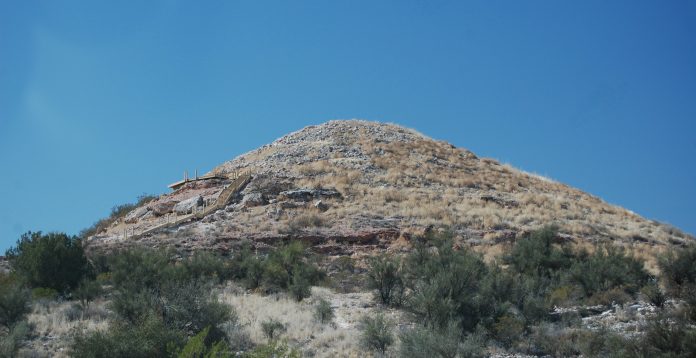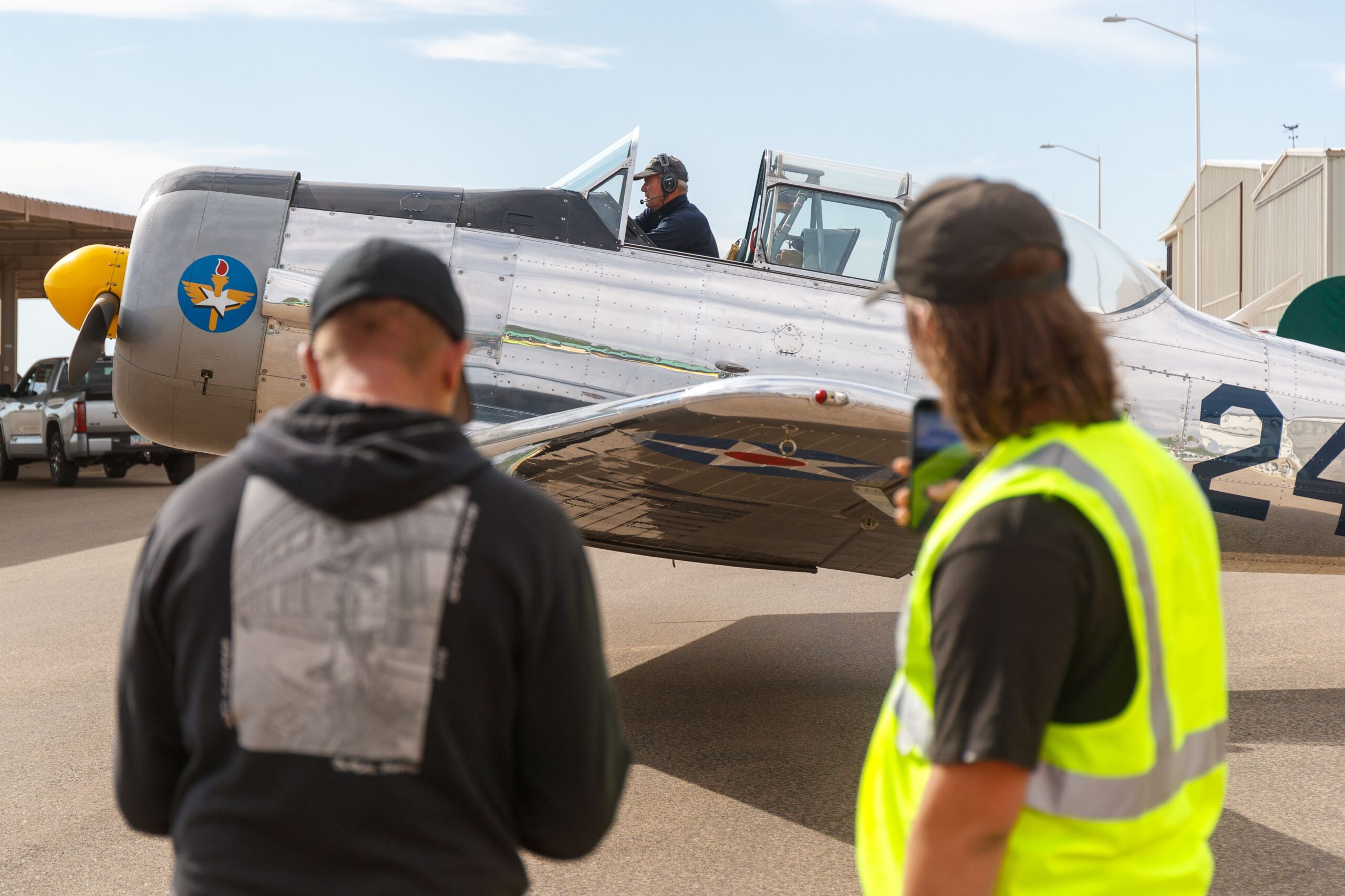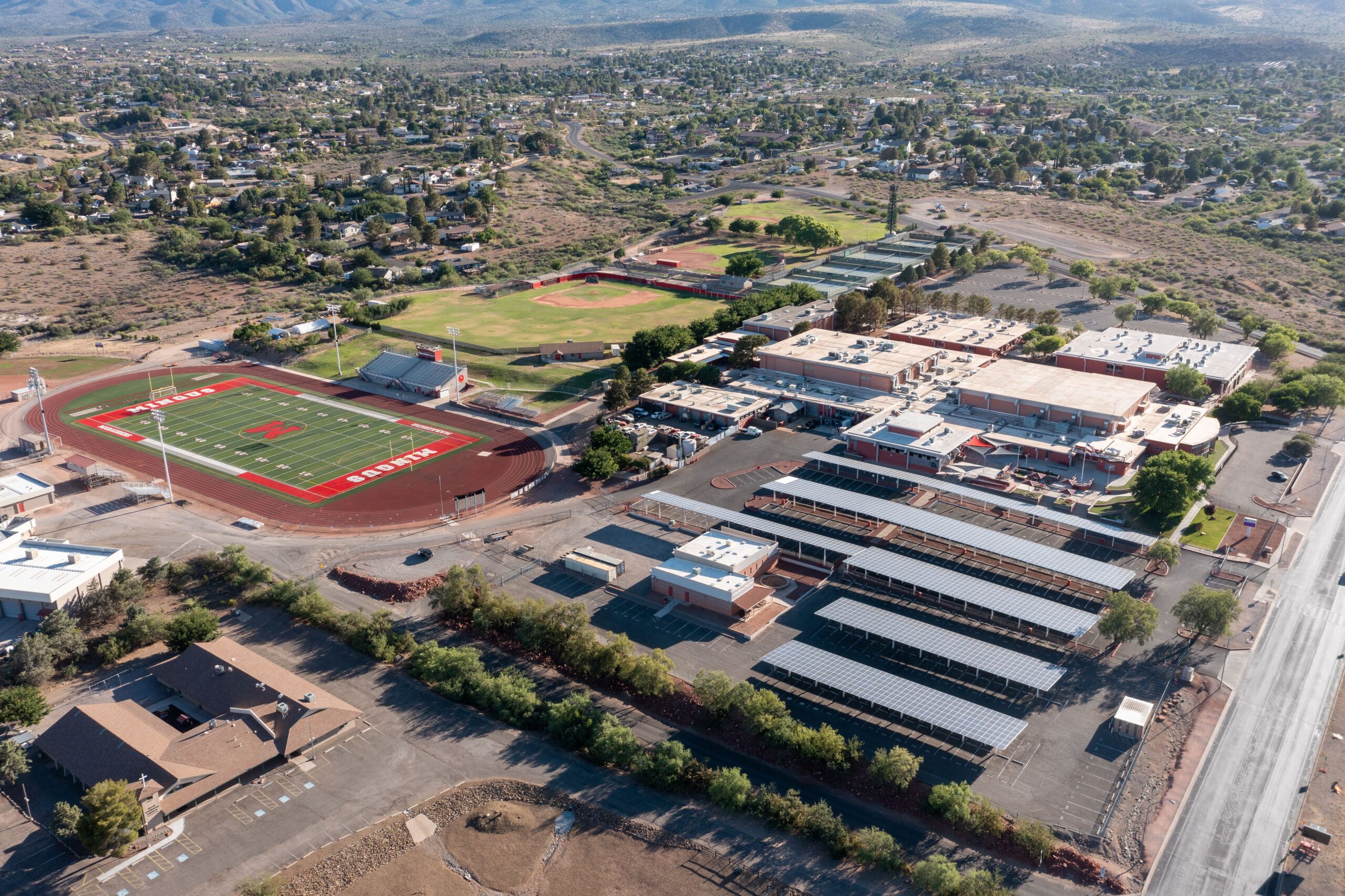More than 600 years ago, long before the city of Cottonwood was founded, before even the first Europeans landed on an American continent, American Indians of the southern Sinagua culture, a forerunner of the Hopi, lived in the area and built a burial mound, similar to the one at Tuzigoot National Monument.
Featuring more than 100 rooms and dating back to 1300 to 1400 A.D., the Bridgeport Ruin can still be seen looming over State Route 89A, close to Zalesky Road. But in the past few weeks, builders have developed a new feature on the archaeological site: A wooden staircase leading up to a raised platform on its side.
Jim Stitley, a Cornville resident, saw the staircase as he drove by the mound and became concerned. He recalled the words of Grandfather Martin, a Hopi elder he had known a few years back.
“The one thing, he says, that breaks his heart, is to see his sacred sites slowly disappearing,” Stitley said. “He said once they’re gone, they’re gone.”
Stitley thought as well of the Loy Mound in Cornville, a similar site, which had fallen victim to looting until a “no trespassing” sign went up. Part of the Bridgeport mound is protected — much of the archaeological site is contained within National Forest Service land. But the slope close to SR 89A, where the construction can be seen, is private property owned by Vortex Healing ATV Rental, which also operates the Rio Verde RV Park next to the mound. On Feb. 12, the city of Cottonwood granted Vortex Healing a permit for an “independent deck totalling [sic] 582 sq. ft., raised patio totalling 1256 sq. ft. scope of work to include stairs.”
Joy Kim, park manager of Vortex Healing ATV Rental, wrote in an email that the construction is “planned as amenities for park users and visitors for outdoor walk and reflection with [a] view.”
According to Kim, no consultation had been made with any American Indian tribes, but the plans are only for “simple structures” that will not be permanent nor significantly affect the archaeological site.
“The deck and steps, while providing a safer access to the site, will also help to protect the site from erosion and possible damages by increased foot traffic and onsite activities,” Kim wrote in an email.
The permit did not make any mention of the proximity to the archaeological site nor historic preservation. It does verify that the construction meets local building codes, which for many building permits is the main thing that the city checks for. Members of the Cottonwood Community Development office said the city has no official policies regarding construction on archaeological sites, and that at no point during the permit request did the city or Vortex Healing ATV Rental discuss the property’s proximity to the Bridgeport Ruin site.
“It’s state law,” said Ken Zoll, Director of the Verde Valley Archaeological Center, who became interested in the construction after several community members called the center to complain. He described the construction as “distasteful,” but lamented that if the property owners have the proper permits, what they are doing is perfectly legal.
“It’s their property, private property,” he said. “Nothing anyone can do. Unless you dig up a body, there’s really nothing you can’t do to archaeological sites. If there’s an archaeological site on private property, you can do whatever you want.”
Kim said they had not discovered any human or funerary remains, meaning the construction has not run afoul of state antiquities law.
The Forest Service sent archaeologist Ted Neff to check the site and see what was happening. Neff said he is considering returning to the site with professional surveyors in order to confirm that the construction is purely on the privately owned side of the mound.
Hopi Cultural Preservation Office and tribal government did not respond to requests for comment.
Donald Decker, a member of the Yavapai-Apache community speaking only for himself, expressed anger at the construction on ancestral land.
“If this mound staircase is being constructed as easy access to the prehistoric site so that people can have easier access to this sacred ground of the dead while looking at the vistas or possibly be digging for pottery for conversation pieces, it would make this a sacrilegious situation,” Decker wrote in an email. “Does anyone have any right to construct such a walkway over Valley View Cemetery in Cottonwood and to dig into those graves?”
Jon Hecht can be reached at 634-8551 or email jhecht@larsonnewspapers.com



